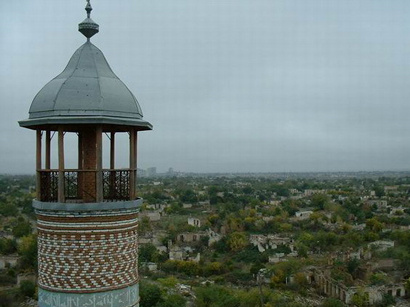Azerbaijan condemns distortion of toponyms in its occupied territories

By Sara Rajabova
Azerbaijan has condemned the distortion of Azerbaijani toponyms in the territories occupied by Armenia on Google Earth and Google Map.
Foreign Ministry spokesman Elman Abdullayev told media on September 30 that Azerbaijan will urge the management of these websites to correct the errors.
According to him, the Azerbaijani embassy in the U.S. was charged with clarifying the issue and informing the management of these websites about Baku's stance.
He added that Azerbaijani citizens should also oppose such distortions, appeal to the management of these search sites and call on them to rectify the mistakes.
Acting director of the Institute of Geography of Azerbaijan National Academy of Sciences (ANAS) Ramiz Mammadov told Trend news agency that he has also come across such instances, but it is impossible to completely prevent this. According to him, anyone can edit maps on Google and Armenians use this to distort the map of Azerbaijan.
Mammadov said Google still uses maps left from the Soviet times.
The scholar noted that all maps that Azerbaijan inherited from the Soviet period are wrong. If the coordinates of the maps are correct, then they are placed on Google. But since the Soviet-era coordinates on the maps are incorrect, none of them are loaded onto Google.
"None of the maps remaining from the Soviet era are correct. When placing these maps on Google, Baku ends up in one place and Siazan in another. But today, the geographic boundaries on the maps are accurate to the millimeter. Now these maps are loaded onto maps of the whole world," Mammadov said.
He said there are various reasons for incorrect coordinates on the Soviet-era maps. The main reason is the fact that the maps were compiled manually, but now they are complied with special electronic applications. One of the benefits of these maps is their accuracy.
Mammadov considers that each map is a database and after placing the cursor to any point on the map, data about the region appears.
"For example, it provides information on a plain. After a click with the cursor, information on the area, fauna and flora of the territory appears. When the cursor is on any settlement, figures showing the population of the settlement, the number of men and women appear. It means that the map currently is a large information base. If there is not any information, then the map is simply mute," Mammadov said.
Most of toponyms in the territories of Azerbaijan occupied by Armenia is displayed in a distorted manner on Google Earth and Google Map. The point is that while looking from the height to Nagorno-Karabakh and the adjacent regions, one can't see the mistake in the names, but when looking at these areas from the lower height the number of the errors increases.
Armenia occupied over 20 percent of Azerbaijan's internationally recognized territory, including Nagorno-Karabakh and seven adjacent regions, after laying territorial claims against its South Caucasus neighbor that sparked a lengthy war in the early 1990s.
The UN Security Council has adopted four resolutions on Armenian withdrawal, but they have not been enforced to this day.
Here we are to serve you with news right now. It does not cost much, but worth your attention.
Choose to support open, independent, quality journalism and subscribe on a monthly basis.
By subscribing to our online newspaper, you can have full digital access to all news, analysis, and much more.
You can also follow AzerNEWS on Twitter @AzerNewsAz or Facebook @AzerNewsNewspaper
Thank you!
